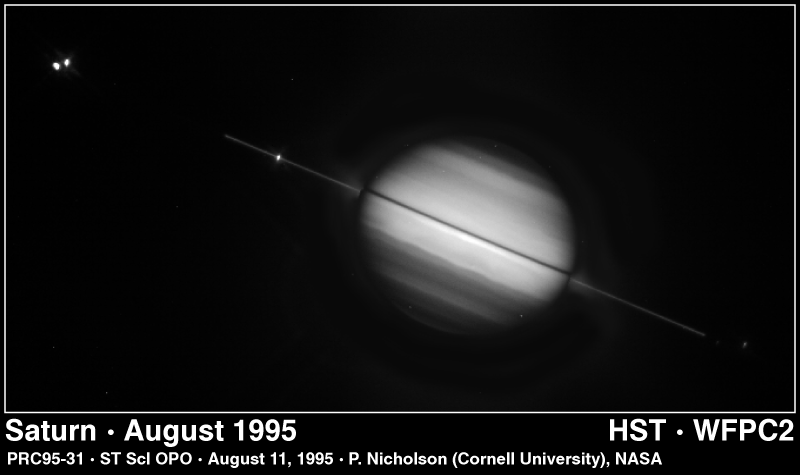Four hundred years ago this week — in 1610 — Galileo Galilei turned his telescope toward Saturn and observed the giant planet’s rings. He didn’t recognize them as rings, however.

(Hubble Space Telescope edge-on view of Saturn’s rings. NASA image.)
(N.B. I’ve found three different dates for the event: today, July 30; July 25; and July 15. July 25th shows up more often than the other dates, so I feel safe in saying “this week.”)
Galileo’s telescope was not powerful enough to resolve the rings; they appeared as separate bodies on either side of Saturn. Galileo wrote that “the star of Saturn is not a single star, but is a composite of three, which almost touch each other, never change or move relative to each other, and are arranged in a row along the zodiac, the middle one being three times larger than the two lateral ones, and they are situated in this form o O o.”
In his 1612 observation they were gone entirely, because he was viewing them edge-on as in the Hubble image above. In 1616 he observed them again and they appeared as two half-ellipses. He did not recognize them as rings even then: that explanation came from Christaan Huygens in 1655.
[BREAK, BREAK]
Moving forward to the last century, 55 years ago today (July 30, 1955) the Soviet Union announced its plan to launch a satellite — which the world came to know later as Sputnik — as part of the upcoming International Geophysical Year.
And on this date in 1965 — 45 years ago — NASA launched Saturn-10 from Cape Canaveral, carrying the third Pegasus micrometeroid detection satellite and Apollo Boiler Plate BP-9.







